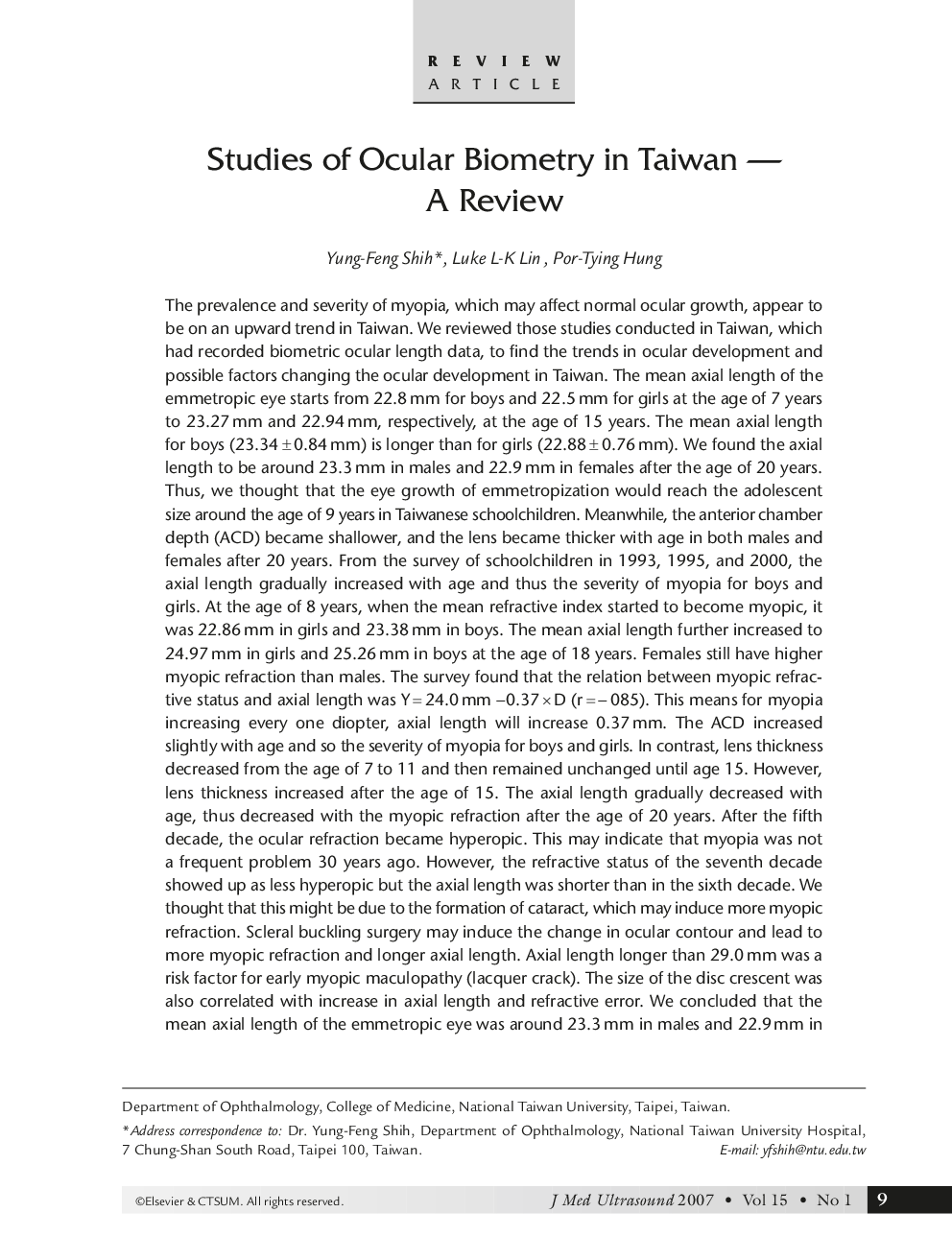| Article ID | Journal | Published Year | Pages | File Type |
|---|---|---|---|---|
| 4233386 | Journal of Medical Ultrasound | 2007 | 10 Pages |
The prevalence and severity of myopia, which may affect normal ocular growth, appear to be on an upward trend in Taiwan. We reviewed those studies conducted in Taiwan, which had recorded biometric ocular length data, to find the trends in ocular development and possible factors changing the ocular development in Taiwan. The mean axial length of the emmetropic eye starts from 22.8 mm for boys and 22.5 mm for girls at the age of 7 years to 23.27 mm and 22.94 mm, respectively, at the age of 15 years. The mean axial length for boys (23.34 ± 0.84 mm) is longer than for girls (22.88 ± 0.76 mm). We found the axial length to be around 23.3 mm in males and 22.9 mm in females after the age of 20 years. Thus, we thought that the eye growth of emmetropization would reach the adolescent size around the age of 9 years in Taiwanese schoolchildren. Meanwhile, the anterior chamber depth (ACD) became shallower, and the lens became thicker with age in both males and females after 20 years. From the survey of schoolchildren in 1993, 1995, and 2000, the axial length gradually increased with age and thus the severity of myopia for boys and girls. At the age of 8 years, when the mean refractive index started to become myopic, it was 22.86 mm in girls and 23.38 mm in boys. The mean axial length further increased to 24.97 mm in girls and 25.26 mm in boys at the age of 18 years. Females still have higher myopic refraction than males. The survey found that the relation between myopic refractive status and axial length was Y = 24.0 mm −0.37 × D (r = −085). This means for myopia increasing every one diopter, axial length will increase 0.37 mm. The ACD increased slightly with age and so the severity of myopia for boys and girls. In contrast, lens thickness decreased from the age of 7 to 11 and then remained unchanged until age 15. However, lens thickness increased after the age of 15. The axial length gradually decreased with age, thus decreased with the myopic refraction after the age of 20 years. After the fifth decade, the ocular refraction became hyperopic. This may indicate that myopia was not a frequent problem 30 years ago. However, the refractive status of the seventh decade showed up as less hyperopic but the axial length was shorter than in the sixth decade. We thought that this might be due to the formation of cataract, which may induce more myopic refraction. Scleral buckling surgery may induce the change in ocular contour and lead to more myopic refraction and longer axial length. Axial length longer than 29.0 mm was a risk factor for early myopic maculopathy (lacquer crack). The size of the disc crescent was also correlated with increase in axial length and refractive error. We concluded that the mean axial length of the emmetropic eye was around 23.3 mm in males and 22.9 mm infemales after puberty. During school age, the axial length and ACD increased with the severity of myopia, in contrast, the lens thickness decreased. After the age of 20, the ACD decreased with aging and lens thickness increased with aging.
